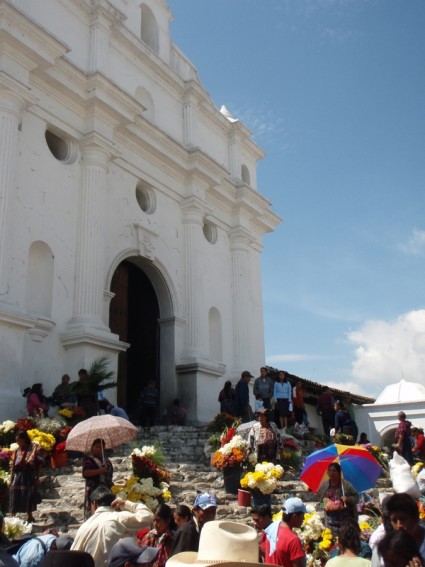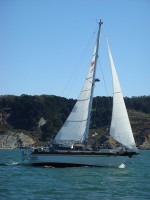
The Cruise of Mariposa
24 November 2009 | Fondeadero San Carlos, Baja California Norte, Mexico
20 November 2009 | Turtle Bay, Baja California Sur, Mexico
19 November 2009 | Bahia Asuncion, Baja California Sur, Mexico
18 November 2009 | Punta Abreojos, Baja California Sur, Mexico
02 November 2009 | Bahia los Frailes, Baja California Sur, Mexico
01 November 2009 | Ensenada de los Muertos, Baja California Sur
30 October 2009 | Playa Pichilingue, Baja California Sur, Mexico
30 October 2009 | La Paz, Baja California Sur, Mexico
16 September 2009 | Puerto Escondido, BCS, Mexico
04 September 2009 | Puerto Escondido, BCS, Mexico
03 September 2009 | Puerto Escondido, BCS, Mexico
31 August 2009 | Puerto Escondido, Baja California Sur, Mexico
31 August 2009 | Puerto Escondido, Baja California Sur, Mexico
09 July 2009 | Puerto Los Gato, Baja California Sur, Mexico
07 July 2009 | San Evaristo, Baja California Sur, Mexico
04 July 2009 | Ensenada Grande, Isla Partida, Baja California Sur, Mexico
30 June 2009 | Southern Baja
22 June 2009 | Mazatlan, Sinaloa, Mexico
19 June 2009 | La Ventana, Baja California Sur, Mexico
19 June 2009 | Puerto Ballandra, Baja California Sur, Mexico
Chichicastenango
25 May 2009 | Chichicastenango, Guatemala
Eric/Hot and Cool

On the Sunday morning after our visit to Lake Atitlan, we took a minibus from Panajachel to Chichicastenango, whose main claim to tourist fame is its enormous marketplace for Mayan handicrafts.
Where to begin? Chichicastenango was a tumult of impressions.
First, the tourist market: Chichicastenango is famous for its profusion of handicrafts. Streets throughout the center of town are blocked off for the vendors. There were textiles in red, brown, blue, yellow and green; sashes and tablecloths and headbands and wristbands and skirts and pants and blouses and blankets, stacked and piled and hung on hangers. It was totally overwhelming. There were stands with hundreds of carved wooden masks; stands with toys; stands with t-shirts or socks or worn-out tools. We didn't buy anything, and although there were many tourists, supply evidently exceeded the demand.
There are other areas of the market that deal in more ordinary items, TV sets and used cell phones and belts and kitchenware. In Guatemala all the tortillas are made by hand, so here and there women stand next to a comal, carefully patting the masa into neat disks, one by one. We saw limestone for sale in chunks, and bags of dried corn in many colors. It was somehow more pleasant to see the locals shopping for their ordinary needs than to be barraged with trade goods we have no space for on our little boat.
The market presses up against the steps of the big Catholic church, where they burn incense in a big tray that wafts through the crowd. Up at the doorway itself, two people maintained candles burning on the threshold, spread flower petals, and swung pungent, smoky incensarios. Inside the church, two long lines of parents presented dozens of dressed-up infants to be baptized by the busy priest. Signs warned tourists not to use their cameras, while proud relatives videotaped the whole event. The priest intoned in Spanish with occasional digressions in Mayan for the benefit of the monolingual.
But the market itself was somehow less impressive than the Mayan people thronging the town. The women wear more traditional dress�"the woven and embroidered huipil, the headscarves, the belts; bare feet. Men wear a mixture of traditional and modern clothing: Woolen vests over polyester shirts, and tennis shoes. Tiny girls are dressed in elaborate handmade costumes with glittering thread woven through. Like their ancestors, the Maya like their teeth adorned, so golden caps flash on front incisors, with the occasional star or cross in the middle�"we even saw a dentist's shop whose signs showed these offerings.
A few hours was enough in Chichicastenango, and eventually we retreated to the fancy old Santo Tomas Hotel for lunch. We dined in a tourist-colonial splendor and watched the parrots, having come to the largest artisanal market in Central America and bought nothing. What were we doing there?
Where to begin? Chichicastenango was a tumult of impressions.
First, the tourist market: Chichicastenango is famous for its profusion of handicrafts. Streets throughout the center of town are blocked off for the vendors. There were textiles in red, brown, blue, yellow and green; sashes and tablecloths and headbands and wristbands and skirts and pants and blouses and blankets, stacked and piled and hung on hangers. It was totally overwhelming. There were stands with hundreds of carved wooden masks; stands with toys; stands with t-shirts or socks or worn-out tools. We didn't buy anything, and although there were many tourists, supply evidently exceeded the demand.
There are other areas of the market that deal in more ordinary items, TV sets and used cell phones and belts and kitchenware. In Guatemala all the tortillas are made by hand, so here and there women stand next to a comal, carefully patting the masa into neat disks, one by one. We saw limestone for sale in chunks, and bags of dried corn in many colors. It was somehow more pleasant to see the locals shopping for their ordinary needs than to be barraged with trade goods we have no space for on our little boat.
The market presses up against the steps of the big Catholic church, where they burn incense in a big tray that wafts through the crowd. Up at the doorway itself, two people maintained candles burning on the threshold, spread flower petals, and swung pungent, smoky incensarios. Inside the church, two long lines of parents presented dozens of dressed-up infants to be baptized by the busy priest. Signs warned tourists not to use their cameras, while proud relatives videotaped the whole event. The priest intoned in Spanish with occasional digressions in Mayan for the benefit of the monolingual.
But the market itself was somehow less impressive than the Mayan people thronging the town. The women wear more traditional dress�"the woven and embroidered huipil, the headscarves, the belts; bare feet. Men wear a mixture of traditional and modern clothing: Woolen vests over polyester shirts, and tennis shoes. Tiny girls are dressed in elaborate handmade costumes with glittering thread woven through. Like their ancestors, the Maya like their teeth adorned, so golden caps flash on front incisors, with the occasional star or cross in the middle�"we even saw a dentist's shop whose signs showed these offerings.
A few hours was enough in Chichicastenango, and eventually we retreated to the fancy old Santo Tomas Hotel for lunch. We dined in a tourist-colonial splendor and watched the parrots, having come to the largest artisanal market in Central America and bought nothing. What were we doing there?
Comments
| Vessel Name: | Mariposa |
| Vessel Make/Model: | 1979 Ta Shing Baba 30 |
| Hailing Port: | San Francisco, CA |
| Crew: | Sarka & Eric |
| About: | Sarka and Eric are on a 12-18 month trip to Mexico and the South Pacific. |
Gallery not available

Who: Sarka & Eric
Port: San Francisco, CA
